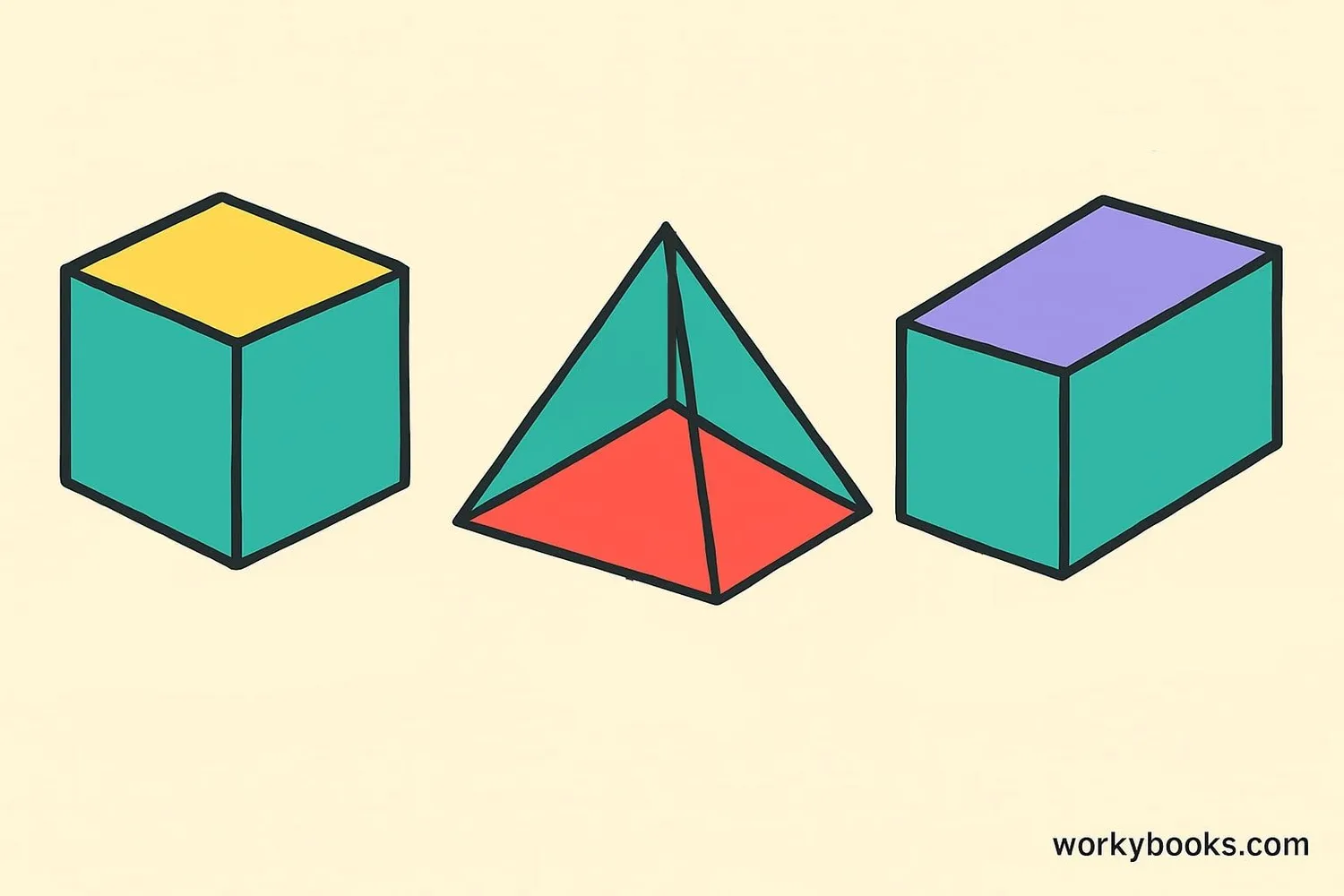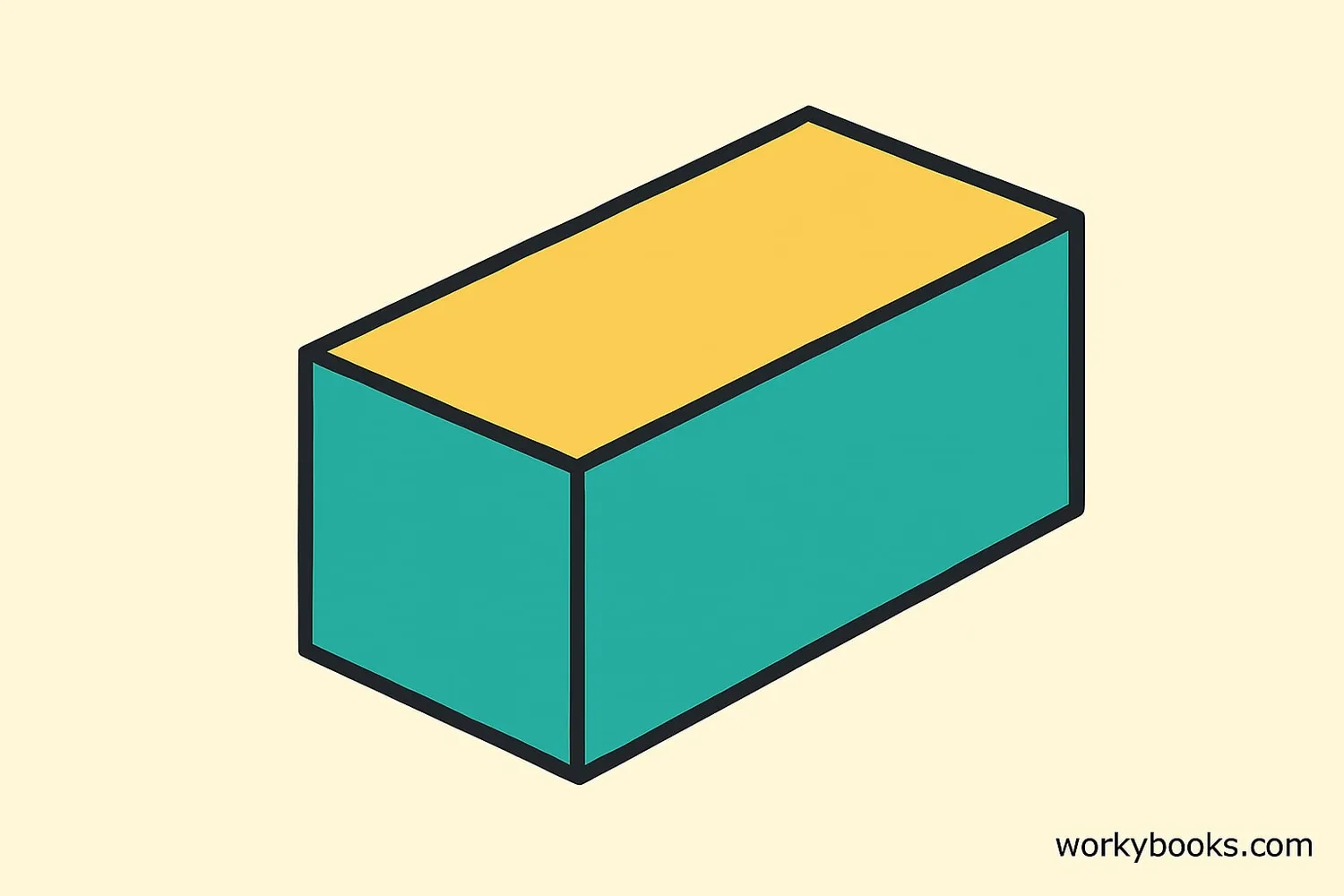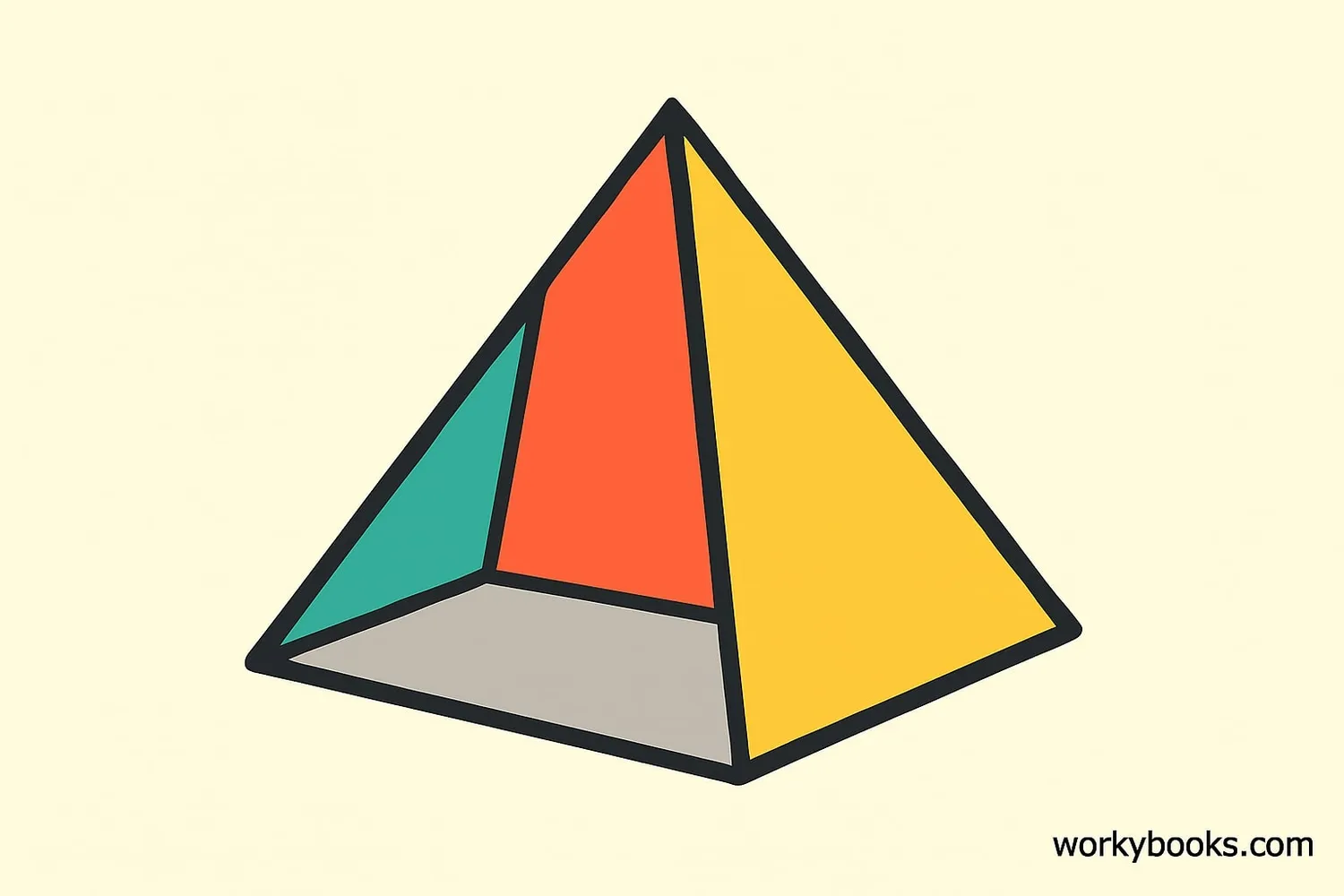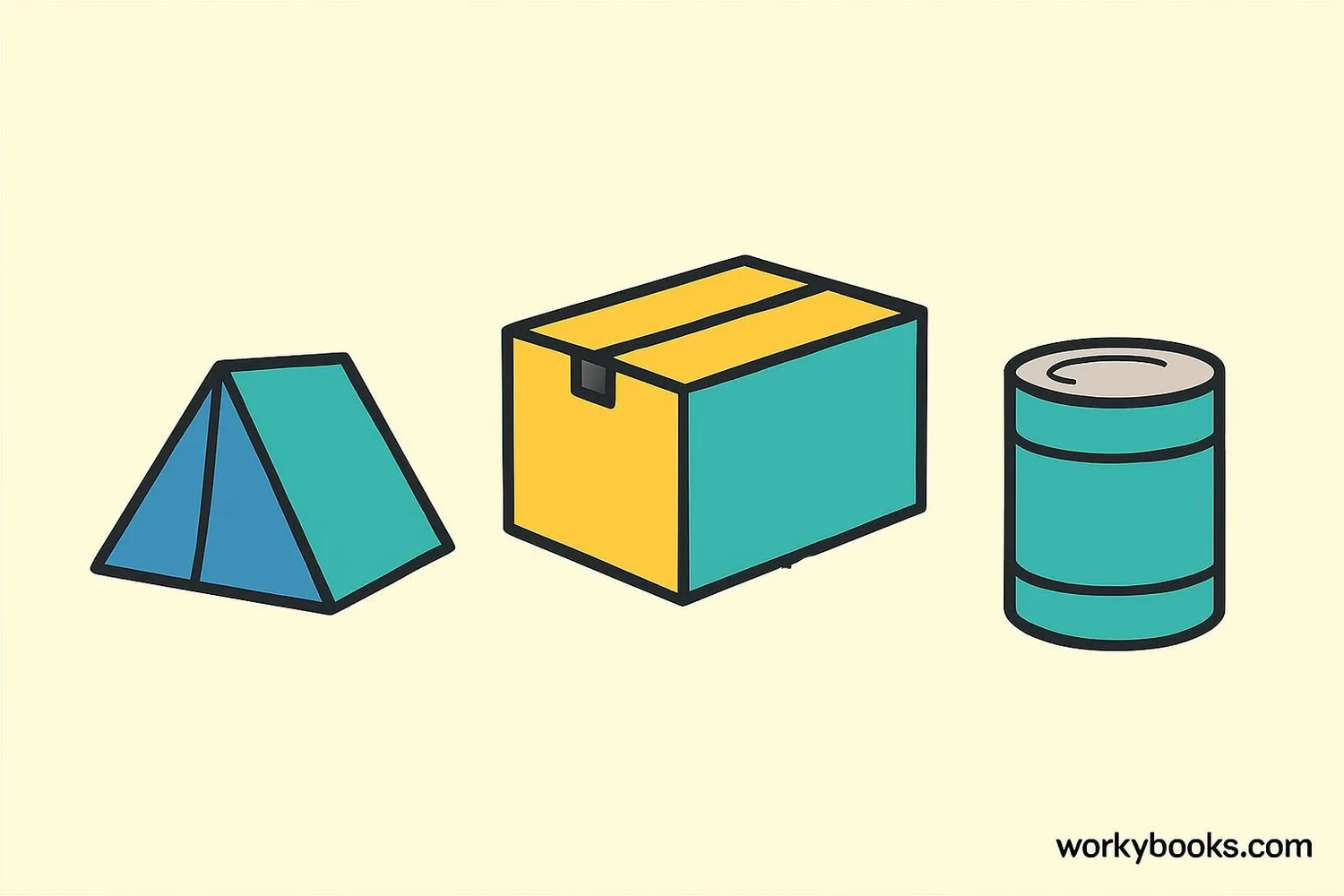Lateral Face - Definition, Examples, Quiz, FAQ, Trivia
Learn about lateral faces in geometry with easy explanations and practice activities
What is a Lateral Face?

A lateral face is the face of a three-dimensional shape that is not a base. In other words, it's a side face that connects the bases of the shape.
Think of a cereal box. The front, back, and sides are all lateral faces. The top and bottom are the bases. Lateral faces help give 3D shapes their depth and structure.
Lateral faces can have different shapes depending on the 3D shape. In prisms, lateral faces are usually rectangles. In pyramids, lateral faces are triangles that meet at the top point (apex).
Key Concept
A lateral face is any face of a 3D shape that is not a base. Lateral faces connect the bases of the shape.
Lateral Face of a Prism

A prism is a 3D shape with two parallel bases that are the same shape and size. The lateral faces of a prism are always parallelograms (usually rectangles).
For example, in a rectangular prism (like a box), the lateral faces are the four side faces. The top and bottom are the bases.
The number of lateral faces a prism has depends on the shape of its base. A triangular prism has 3 lateral faces, a rectangular prism has 4, and a pentagonal prism has 5 lateral faces.
Example: Triangular Prism
A triangular prism has 2 triangular bases and 3 rectangular lateral faces.
Remember
In a right prism (where sides are perpendicular to bases), all lateral faces are rectangles.
Lateral Face of a Pyramid

A pyramid is a 3D shape with a polygon base and triangular lateral faces that meet at a point called the apex.
Unlike prisms, pyramids have only one base. All the other faces are lateral faces. In a pyramid, all lateral faces are triangles.
The number of lateral faces a pyramid has depends on the shape of its base. A square pyramid has 4 triangular lateral faces, a triangular pyramid (tetrahedron) has 3 triangular lateral faces, and a pentagonal pyramid has 5 triangular lateral faces.
Example: Square Pyramid
A square pyramid has 1 square base and 4 triangular lateral faces that meet at the apex.
Remember
In a pyramid, all lateral faces are triangles that meet at the apex (top point).
Real-World Examples

Lateral faces are all around us in everyday objects. Let's look at some examples:
Example 1: A cereal box is a rectangular prism. Its lateral faces are the front, back, left, and right sides. The top and bottom are the bases.
Example 2: A tent is often shaped like a triangular prism. The two triangular ends are the bases, and the three rectangular sides are the lateral faces.
Example 3: An Egyptian pyramid is a square pyramid. The square bottom is the base, and the four triangular sides are the lateral faces.
Example 4: A can of soup is like a cylinder. The curved surface is the lateral face, and the circular top and bottom are the bases.
Look around you and try to identify lateral faces in objects you see every day!
Observation Tip
When identifying lateral faces, first find the bases of the 3D shape. All other faces are lateral faces.
Lateral Face Practice Quiz
Test your understanding of lateral faces with this 5-question quiz. Choose the correct answer for each question.
Frequently Asked Questions
Here are answers to common questions about lateral faces:
Geometry Trivia
Discover interesting facts about geometry and 3D shapes:
Ancient Geometry
The ancient Egyptians were among the first to use geometry extensively. They needed it to resurvey their fields after the annual Nile floods and to build their famous pyramids with precise measurements.
Euler's Formula
For many polyhedrons, there's a relationship between faces (F), vertices (V), and edges (E): F + V - E = 2. This is called Euler's formula, discovered by mathematician Leonhard Euler in the 18th century.
Platonic Solids
There are only five 3D shapes where all faces are identical regular polygons, and the same number of faces meet at each vertex. These are called Platonic solids: tetrahedron, cube, octahedron, dodecahedron, and icosahedron.
Nature's Geometry
Honeybees build their hives with hexagonal cells because this shape uses the least amount of wax to store the most honey. Hexagons fit together perfectly with no gaps, making them very efficient.





